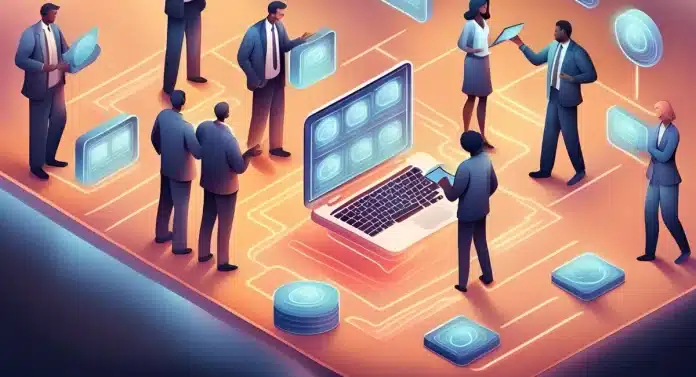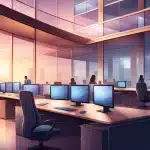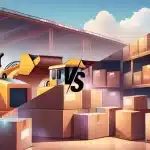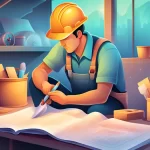Imagine handling thousands of assets every day without a reliable system to track them. You’d constantly wonder where things are, who’s using what, and whether anything’s gone missing. Sounds chaotic, right?
That’s exactly what happens when companies rely on spreadsheets or outdated tools. In fact, some businesses discover that 10–30% of their assets are missing—‘ghost assets’ that no longer exist on the ground but still sit on the books.
HashMicro Asset Management Software is built for problems like this, so why not give it a try? It helps businesses tracking every asset in real time, flagging status updates, as well as give accurate, visual reports with just a few clicks.
This article will walk you through what an asset management system actually does, which features matter, and how the right one can clean up your asset management.
Key Takeaways
|
Table of Contents
What is an Asset Management System?
An asset management system is a tool used by businesses to monitor, maintain, and optimize their assets, ensuring efficient utilization and cost control. It tracks both tangible assets, like machinery and vehicles, and intangible assets, such as software licenses and intellectual property, providing real-time insights for data-driven decisions.
The software consolidates important asset information, including locations, users, and usage details, into one platform accessible via web and mobile apps. This centralization streamlines asset tracking, helping businesses manage their growing number of assets efficiently as they expand.
To ensure effectiveness, real-time tracking is vital to avoid costly mistakes and asset loss. The software provides a comprehensive view, helping industries like manufacturing and mining maintain optimal asset management and prevent downtime.
Asset tagging plays a key role by allowing businesses to affix unique labels to each asset for precise tracking of data like location and maintenance history. This process improves productivity, reduces equipment failure, and enhances operational efficiency by ensuring complete visibility and control over all assets.
How Does Asset Management System Work?

Effective enterprise asset management starts with assigning a dedicated manager to oversee all aspects of the company’s assets, including equipment, inventory, and personnel. This manager develops a comprehensive plan for asset management, covering their development, operation, maintenance, and eventual disposal, ensuring efficiency at every stage.
A holistic approach to asset management considers the entire lifecycle of assets. Examples of asset management systems include managing industrial equipment and vehicles, from procurement to disposal. This approach ensures careful monitoring and control at every step.
The right asset tracking system is crucial, as it helps collect and analyze data to inform decision-making. For example, it can track different industrial machinery brands’ performance, maintenance costs, and lifespan, aiding in procurement decisions.
Why Businesses Need Asset Management System
Manual asset management can lead to major challenges, with nearly half of businesses lacking proper inventory and asset management practices. In fact, 43% of companies still rely on manual tracking methods or fail to track their assets altogether.
Moreover, studies reveal that approximately 80% of employees spend about 30 minutes daily searching for information, underscoring the inefficiency of this approach.
Fortunately, there’s a solution to this issue. With an asset management system, you can automate asset tracking and management seamlessly. Real-time updates are made easy with a simple scan of a barcode or RFID tag, allowing you to track asset locations and conditions effortlessly.
Asset management systems provide peace of mind through their robust functionality and accuracy, making them essential for any business. Here’s the benefits of asset management system you need to know:
- Reduce Costs: Asset management systems help lower operational costs by enhancing efficiency and preventing asset loss, which can otherwise result in expensive setbacks.
- Mitigate Risks: Identify and mitigate risks to assets, ensuring their security and longevity. While 80% of equipment maintenance is reactive, it should be proactive. Asset management systems help businesses conduct preventive maintenance.
- Optimize Maintenance: Planning regular maintenance schedules with an asset management system prevents unscheduled downtime and costly repairs, ensuring smoother operations.
- Seamless Asset Tracking: Efficiently track, maintain, and allocate industrial equipment from a centralized platform, reducing the risk of loss and boosting organization throughout your operations.
- Enhanced Location Management: Easily monitor asset locations across multiple sites, allowing for automatic updates and seamless integration as your business expands.
- Complete Audit-Ready Records: Maintain comprehensive and accurate records of all assets, making sure your company is always prepared for audits—without the need for manual tracking.
Types of Asset Management System
There are various types of asset management software designed to cater to companies of different sizes and industries. Some are comprehensive systems that handle all aspects of asset management, while others focus on specific areas.
Below are the most common types of asset management system:
- Enterprise Asset Management (EAM) System: EAM is a complete solution for larger companies to monitor asset performance management and costs throughout their lifecycle. It includes advanced analytics and can track assets across multiple locations, making it ideal for organizations with numerous assets.
- Computerized Maintenance Management System (CMMS): CMMS is centered on asset maintenance. It automates tasks like work orders, boosts equipment reliability, reduces costs, improves inventory accuracy, and ensures compliance with industry regulations.
- IT Asset Management (ITAM) System: ITAM focuses on managing digital assets such as hardware, software licenses, and digital files. It tracks usage, ensures compliance, manages licenses, and monitors cybersecurity activities.
- Facility Management Software: This software handles assets related to buildings, infrastructure, and utilities. It helps with maintenance planning, optimizing space, managing leases, and improving energy efficiency.
- Inventory Management System: While asset management system often includes inventory features, standalone inventory management system is suitable for businesses focusing solely on tracking stock, recording inventory, and managing warehouse operations.
EAM and CMMS are among the most popular options, but choosing the right software depends on your company’s specific needs.
Asset management systems are very important investments for companies. If you’re looking for the best asset management system in the Philippines, HashMicro stands out as the best choice. For more detailed information about HashMicro’s system, you can download the price scheme below.

How to Find the Best Asset Management System
Asset managers face the task of choosing the right platform from various options, each offering unique features. They must carefully evaluate the platforms based on their business goals and requirements to make an informed decision. Here are key factors to consider:
- Business objectives: Evaluate the system’s features against the business’s short and long-term goals. Look for features that align with objectives, such as enhanced asset visibility and improved customer response time.
- Budget: Assess each system’s payment structure to ensure it fits the budget. Consider factors like the number of assets, add-ons, and team members required, comparing costs to find the most suitable option.
- System type: Based on your business structure and preferences, choose between cloud-based and in-house systems. Cloud-based systems are often preferred for their flexibility and accessibility, especially for businesses with multiple locations.
- Security capabilities: Prioritize security features such as OTPs, password protection, and custom roles to safeguard sensitive data stored in the system. Ensure that the chosen system protects against potential threats and unauthorized access.
If you are wondering which asset management system is the most suitable for your business, you can read more about the best asset management software in our article.
Common Challenges in Asset Management
Implementing an asset management system can greatly streamline operations, but businesses often face challenges that can hinder its success. From technical difficulties to human error, addressing these challenges is key to ensuring that the system delivers its full benefits.
Below are some common challenges faced by businesses when managing assets, along with insights on how to overcome them:
- Data Entry and Accuracy: One of the biggest challenges businesses face is ensuring accurate and consistent data entry. Incorrect or outdated data can lead to confusion and errors, affecting the entire asset management process.
- Employee Training and Adoption: Even the most advanced asset management system can fail if employees are not properly trained. Investing in adequate training programs ensures that employees can fully utilize the system, improving overall efficiency and reducing the risk of mistakes.
- System Integration Issues: Integrating an asset management system with existing software or processes can be complex. Proper planning and choosing the right system that integrates smoothly with other tools can prevent future headaches and ensure seamless operations.
- Asset Tagging and Tracking: Implementing a robust system for asset tagging and tracking can be challenging, especially for businesses with large inventories. Using RFID or barcode tags and keeping them up-to-date ensures that assets can be tracked accurately in real-time.
- Budget and Resource Constraints: Some businesses struggle to allocate sufficient resources for an asset management system due to budget constraints. However, the long-term savings and efficiency gains typically outweigh the initial investment, making it a worthwhile expense.
In conclusion, while these challenges can seem daunting, addressing them through proper planning, employee training, and system integration ensures a successful asset management implementation.
Asset Management System Examples
Before diving into specific examples, it’s important to understand how an asset management system can be applied across different industries. These systems play a crucial role in optimizing asset usage, ensuring maintenance, and reducing overall costs.
Now, let’s explore some real-world examples of how businesses are leveraging asset management systems to streamline their operations and achieve greater efficiency.
- Construction Equipment Tracking: In a construction company, an asset management system helps track machinery, tools, and vehicles, ensuring they are well-maintained and efficiently used across different job sites. This reduces the risk of equipment failure and improves overall project timelines by preventing equipment shortages or misplacement.
- Software License Management: In the tech industry, an asset management system is used to track software licenses and intellectual property, ensuring compliance and preventing unauthorized use. By managing these assets, companies can avoid costly penalties and optimize software utilization.
- Inventory Management in Retail: Retail businesses can use asset management systems to track inventory levels, ensuring that stock is efficiently allocated and stored. This helps prevent stockouts, reduces overstocking, and improves order fulfillment, leading to better customer satisfaction.
- Facility Equipment Monitoring: An asset management system tracks equipment such as HVAC systems, elevators, and lighting fixtures for facility management. This ensures that maintenance is done on time, reducing the risk of unexpected breakdowns and costly repairs.
- Fleet Management in Logistics: Logistics companies rely on asset management systems to track their fleet of vehicles, including their maintenance schedules, fuel usage, and service histories. This enables efficient management of resources, ensures timely deliveries, and prolongs the lifespan of the fleet.
Each of these examples highlights how asset management systems can streamline operations, reduce costs, and improve the efficiency of asset utilization across different industries. By providing real-time data, businesses can make informed decisions, enhance productivity, and minimize errors.
Optimizing Asset Management System with HashMicro Asset Software

A strategic asset management plan is vital for streamlining operations and enhancing efficiency. To support this, HashMicro’s asset management software provides a comprehensive suite of features that complement the planning process and boost overall productivity.
Here’s how it simplifies and improves asset management:
- Efficient asset tracking: HashMicro enables precise tracking of assets through automated identification systems. Utilizing barcodes or RFID tags ensures all assets are easily located and managed throughout their lifecycle.
- Proactive maintenance scheduling: The software aids in planning maintenance activities, alerting you to necessary upkeep to prevent downtime and extend asset life.
- Comprehensive lifecycle management: HashMicro offers thorough lifecycle management capabilities from acquisition to disposal. It assists in monitoring asset value, managing procurement, and strategizing for future asset replacement.
- Asset utilization insights: With HashMicro’s analytical tools, you can gain valuable insights into how assets are used. This information helps maximize asset efficiency and availability across the organization.
- Regulatory compliance and risk management: HashMicro supports adherence to industry regulations and manages asset-related risks. It simplifies compliance and ensures readiness for audits with organized documentation.
- Data-driven reporting: The software provides customizable reporting features that allow for detailed analysis of asset usage, maintenance expenses, and value depreciation, aiding in informed decision-making and future planning.
You can achieve a well-organized and effective asset management system by incorporating HashMicro’s asset management solution into your strategic plan. Its robust features are designed to align with your asset management objectives, offering a streamlined approach to managing your company’s valuable assets.
Conclusion
With a clear understanding of the importance of asset management, Philippine businesses need a reliable solution to streamline their asset tracking and management processes. HashMicro asset management software is the top choice for companies in the Philippines when optimizing their asset management.
HashMicro’s user-friendly platform simplifies asset tracking, maintenance, and reporting, which boosts operational efficiency. Advanced features like automated depreciation and real-time analytics help businesses maximize asset utilization, and enhance their understanding of asset management meaning and its practical application.
HashMicro adapts to businesses of all sizes, providing a 360-degree view of assets. This enables informed decision-making and strategic planning, driving success. With HashMicro, tracking and managing assets across locations, departments, and teams is seamless.
Moreover, it integrates easily with other systems, such as accounting, inventory, and manufacturing, providing a unified asset management approach.
Take the first step towards optimizing your asset management – sign up for our free demo and see the difference HashMicro can make for your business!

FAQ About Asset Management System
-
What is a good asset management plan?
Calculating the life cycle costs of your assets is crucial for developing a precise asset management plan. This includes not just the initial purchase costs, but also ongoing expenses like maintenance, performance upgrades, and disposal.
-
What is an asset management platform?
Asset management software helps centralize asset information, making it simpler to track assets across an organization. Modern businesses use this software to lower the administrative costs of managing their assets.
-
What are the 5 steps of asset management?
Each asset experiences five key stages in its life: planning, acquiring, using, maintaining, and disposing. Most of the time is spent during the use and maintenance stages, but every stage is crucial for maximizing the asset’s value.
-
Is asset management part of ERP?
While an ERP system can help with asset management, it is primarily focused on centralizing core business information and handling daily operations. In contrast, EAM software is specifically designed for asset management, offering detailed modules for tracking and analyzing asset performance.





































































